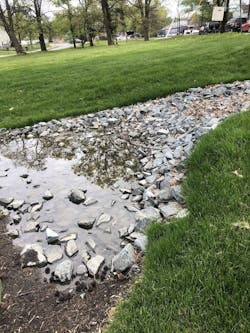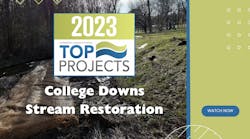Winner profiles were compiled by SWS Managing Editor Katie Johns and Associate Editor Cristina Tuser. Johns can be reached at [email protected] and Tuser can be reached at [email protected].
undefinedLocation: Fairmount Heights, Maryland
Cost: $469,515
Size: ~200 square yards
Owners: Corvias Infrastructure Solutions
& Prince George’s County, Maryland
Manager: HDR
Designer: Soltesz, LLC
Contractors: Nardi Construction, Stormwater Maintenance, LLC & L.E. Blue
Manufacturer: Link-belt, CASE, John Deere
With the goal of improving existing infrastructure in Fairmount Heights, Maryland, the Clean Water Partnership, Corvias Infrastructure Solutions and Prince George’s County, set out to install a micro-bioretention device in the public right-of-way in the town.
The site is located within a TMDL catchment area for sediments and is intended to treat runoff from the surrounding area before it runs into the Cabin Branch stream, which flows into the Anacostia River. Hence, the two major goals of the project were to treat unmitigated storm water and provide storage for runoff during heavy rain events.
Along with the storm water improvements, the CWP has overarching socio-economic goals that are aligned with this project – the inclusion of over 80% participation by target class businesses (local, minority, disadvantaged small, minority and women-owned business entities) meeting and exceeding the requirement of 50% target utilization.
But though the project goals were met, that does not mean that the team did not face any challenges. Along with the COVID-19 pandemic, the project team also had to deal with both community and public sector involvement, existing infrastructure challenges and flooding issues.
"The project is a true example of our community-based centric goals and efforts connecting environmental needs and improvements to social impact through public engagement and connection,” said Keisha Brown, director of Partnerships and Client Relations for Corvias. "We worked with the community to mitigate a local environmental issue, beautified, and enriched the physical community and supported the local economy through the utilization of local businesses and residents.”
As of press time, the project was fully established and functioning as intended.






